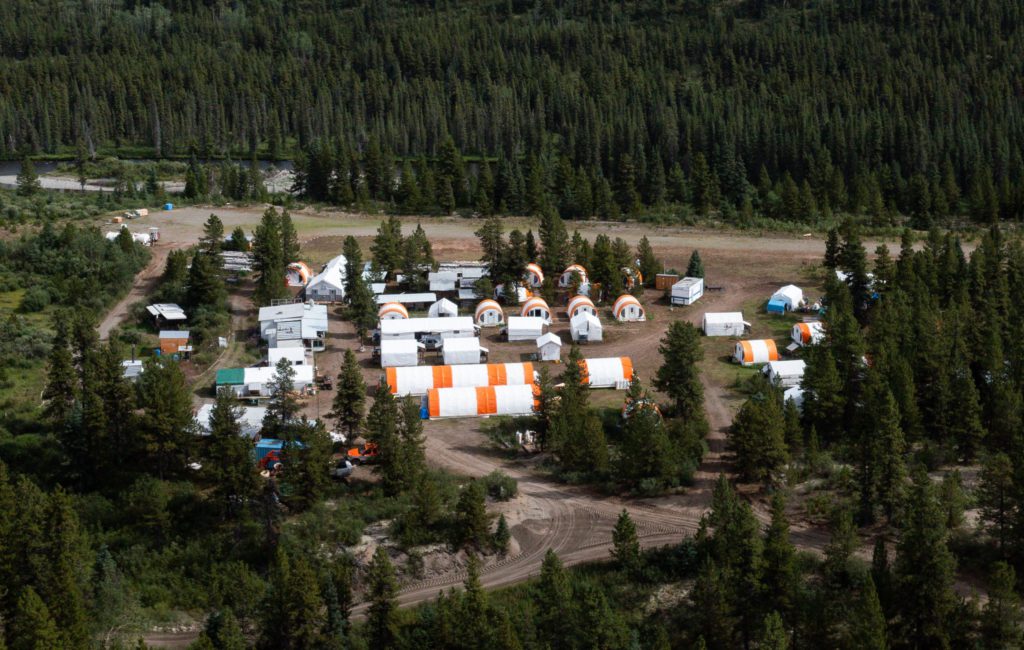JV Article: Giga Metals aims to develop Turnagain into the world’s first carbon-neutral nickel mine


Giga Metals (TSXV: GIGA; US-OTC: HNCKF) is exploring for metals critical to the lithium-ion batteries used in electric vehicles and energy storage technologies.
The junior is advancing its 100%-owned Turnagain nickel and cobalt project in north-central British Columbia, about 1,350 km northwest of Vancouver.
Mark Jarvis, the Canadian company’s CEO, says the project is one of the most significant undeveloped sulphide nickel and cobalt resources in the world and “could provide an ethical and environmentally sustainable long-term supply of nickel for the North American and European electric vehicle markets.”
“Turnagain is being designed to be a world-class leader in low-carbon nickel production,” he says. “When operational, the mine will be powered by hydroelectricity and will employ passive carbon sequestration in the tailings to balance emissions generated from mining equipment.”
Giga Metals has been working with Greg Dipple at the University of British Columbia’s Bradshaw Initiative for Minerals and Mining to trial the sequestration technique, which converts silicate tailings minerals to carbonate minerals, “locking the carbon dioxide away for geological time scales,” Jarvis said.
Initial test work returned carbon dioxide (CO2) absorption at rates that “support our ambition to build a carbon-neutral mine, without the need to purchase carbon credits to offset any emissions generated on site,” Jarvis added.
A preliminary economic assessment in 2020 for Turnagain estimated a surface mining operation with a carbon footprint of 2.24 tonnes of CO2-equivalent per tonne of nickel produced in concentrate, which, Jarvis noted, is an order of magnitude lower than the global average of 25.6 tonnes of CO2-equivalent per tonne of nickel.
“The study assumed a diesel mine fleet, but if an electric mine fleet were employed, the carbon intensity would drop to 0.69 tonnes of CO2-equivalent per tonne of nickel,” he said.
When tailings management with carbon capture and storage is factored in, the study estimated that approximately 900,000 tonnes of CO2 could be sequestered over the life of the mine, which, Jarvis said, “could effectively lower its carbon footprint to zero by completely offsetting the mine’s scope 1 and 2 emissions.”
The PEA envisaged an open-pit mine producing an average of 33,215 tonnes of nickel in concentrate and 1,962 tonnes of cobalt in concentrate every year for a total output of 1.23 million tonnes of nickel in concentrate and 72,592 tonnes of cobalt in concentrate over a 37-year mine life.
Initial capital costs were pegged at US$1.4 billion, with US$2 billion budgeted for sustaining capital over the life of the mine. Based on prices of US$7.50 per lb nickel and US$22.30 per lb cobalt, the study outlined an after-tax internal rate of return of 4.9%. Initial capex could be paid back in just under 15 years.
The early-stage study was based on an updated mineral resource estimate of 1.1 billion measured and indicated tonnes grading 0.22% nickel and 0.013% cobalt for 5.2 billion lb contained nickel and 312 million lb of cobalt and inferred resources of 1.1 billion tonnes grading 0.22% nickel and 0.01% cobalt for 5.5 billion lb of nickel and 327 million lb of cobalt.

“As the only undeveloped nickel deposit of this scale in North America that is focussed on the battery market, our emphasis on low-carbon mining and ESG [Environmental, Social, and Governance] principles will, we believe, make us a very desirable source of battery metals for the electric vehicle and energy storage markets,” Jarvis said.
Giga Metals is also investigating the expansion of Turnagain’s processing facility to include the production of a mixed hydroxide precipitate (MHP).
According to Jarvis, MHP is fast becoming the battery manufacturing industry’s preferred product for the preparation of precursors and cathode active materials, such as nickel-cobalt-aluminium oxide and nickel-cobalt-manganese oxide, used in lithium-ion batteries.
“If we decide to process to high-quality MHP, it will create a more efficient route to battery manufacturers by bypassing smelters, thereby increasing our payables,” he said. “The increase in payables will, we think, more than justify the extra processing expense.”
Results from initial test work have shown that concentrates from Turnagain can produce higher quality MHP compared with those produced by high pressure acid leaching from laterite deposits mined in places such as Indonesia and Papua New Guinea. The MHP produced at Turnagain also contains less manganese — considered a deleterious element in MHP — than currently available on the market.
In July, the company started its 2021 work program, which includes infill drilling to upgrade the mineral resource classifications, geotechnical drilling for the design of the pit wall, and a 9,000-metre seismic refraction survey for the design of the tailings storage facility.
The program is designed “to collect exploration, geotechnical, and engineering data to advance Turnagain to the prefeasibility level, with the goal producing a prefeasibility study in 2022,” Jarvis said.
The preceding Joint-Venture Article is PROMOTED CONTENT sponsored by GIGA METALS and produced in cooperation with Canadian Mining JOurnal. Visit www.gigametals.com for more information.
Comments